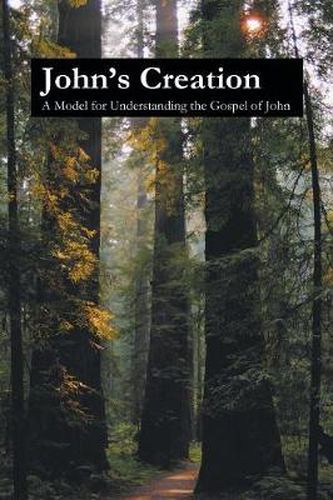Readings Newsletter
Become a Readings Member to make your shopping experience even easier.
Sign in or sign up for free!
You’re not far away from qualifying for FREE standard shipping within Australia
You’ve qualified for FREE standard shipping within Australia
The cart is loading…






This title is printed to order. This book may have been self-published. If so, we cannot guarantee the quality of the content. In the main most books will have gone through the editing process however some may not. We therefore suggest that you be aware of this before ordering this book. If in doubt check either the author or publisher’s details as we are unable to accept any returns unless they are faulty. Please contact us if you have any questions.
John’s Gospel begins:
In the beginning was the Word, and the Word was with God, and the Word was God. He was with God in the beginning. Through him all things were made; without him, nothing was made that has been made.
This opening reflects the presentation of the Creation sequence in the first book of the Bible. Beyond this, we hypothesize that John’s Gospel presents Jesus’ life and ministry as a spiritual parallel to the physical creation sequence in Genesis. This makes John’s Gospel markedly different form the other three Gospels, which portray a more chronological narrative.
This spiritual creation structure is employed in interpreting John’s Gospel, though the interpretations are not constrained by this thought. Successive chapters in this analysis consider the successive days of the spiritual creation sequence in John’s gospel; with an expositional section and an exhortational one. This couplet is repeated seven times in the book, for each of the spiritual days. In each chapter, the spiritual equivalent of the component in the ‘physical day’ of the Genesis creation is considered alongside the presentation of Jesus Christ in each spiritual day of John’s Gospel.
The final chapter addresses questions of overall conceptual format to ensure that we have not missed the forest for the trees, i.e.:
How are the Father and Son glorified from a spiritual creation sequence embedded in a Gospel?
Are there othe portions of scripture patterned this way and, if so, what do we gain perceiving the spiritual creation sequence within them?
How does the perception of John’s spiritual creation help us to be better disciples of Jesus Christ?
It is hoped the analysis presented in John’s Creation will answer these questions and therefore prove of genuine worth to one walking the path of discipleship in Christ.
$9.00 standard shipping within Australia
FREE standard shipping within Australia for orders over $100.00
Express & International shipping calculated at checkout
This title is printed to order. This book may have been self-published. If so, we cannot guarantee the quality of the content. In the main most books will have gone through the editing process however some may not. We therefore suggest that you be aware of this before ordering this book. If in doubt check either the author or publisher’s details as we are unable to accept any returns unless they are faulty. Please contact us if you have any questions.
John’s Gospel begins:
In the beginning was the Word, and the Word was with God, and the Word was God. He was with God in the beginning. Through him all things were made; without him, nothing was made that has been made.
This opening reflects the presentation of the Creation sequence in the first book of the Bible. Beyond this, we hypothesize that John’s Gospel presents Jesus’ life and ministry as a spiritual parallel to the physical creation sequence in Genesis. This makes John’s Gospel markedly different form the other three Gospels, which portray a more chronological narrative.
This spiritual creation structure is employed in interpreting John’s Gospel, though the interpretations are not constrained by this thought. Successive chapters in this analysis consider the successive days of the spiritual creation sequence in John’s gospel; with an expositional section and an exhortational one. This couplet is repeated seven times in the book, for each of the spiritual days. In each chapter, the spiritual equivalent of the component in the ‘physical day’ of the Genesis creation is considered alongside the presentation of Jesus Christ in each spiritual day of John’s Gospel.
The final chapter addresses questions of overall conceptual format to ensure that we have not missed the forest for the trees, i.e.:
How are the Father and Son glorified from a spiritual creation sequence embedded in a Gospel?
Are there othe portions of scripture patterned this way and, if so, what do we gain perceiving the spiritual creation sequence within them?
How does the perception of John’s spiritual creation help us to be better disciples of Jesus Christ?
It is hoped the analysis presented in John’s Creation will answer these questions and therefore prove of genuine worth to one walking the path of discipleship in Christ.